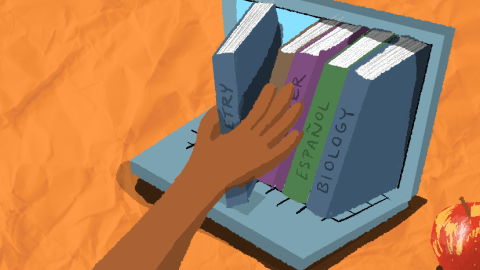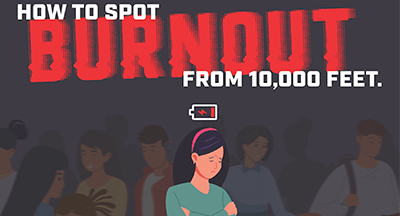
Editor's note: This post first appeared at eLearning Industry.
Remote learning outside schools, or eLearning, has undergone a rapid shift from being a fun little novelty to an emergency necessity to a much-maligned chore. Now that communities are well on their way to defining a new normal, where does eLearning fit in? Let’s explore the impact of eLearning on the way we teach and learn in schools.
November 2019: eLearning is a novelty
Before the average person had ever heard of COVID-19 or thought about a pandemic in anything other than a historical sense, eLearning existed mostly as a threat to a cherished tradition: the snow day.Read more: Setting Up an eLearning Day
Steps to setting up an eLearning day were leisurely: teachers and IT pros would work together to determine how students would complete work from home. Pre-readers were mostly exempt from the concept or offered low-tech options. The concept was experimental, theoretical, counter-cultural, and most notably optional.
Oh, how things change, especially for our not-ready-for-prime-time friend, eLearning.
April 2020: eLearning is the only option
“Educators, kids, and families have been pushed to the limits of patience—and ingenuity.”Read more: How eLearning Can Empower Kids
These are the days of hastily cobbled home offices and picking up sanitized technology in outdoor drive-up lines. Classrooms are closed for two weeks to slow the spread, then indefinitely. eLearning is no longer a novelty, but it does feel like a curse from time to time.
Educators and IT teams rose to the challenge despite inadequate internet connectivity in homes. Yes, school staff made magic there too, sending home mobile hotspots, creating wifi-capable school buses, and printing worksheets from learning platforms. Truly, the emergency response to moving schools to homes drove home the dedication and brilliant design thinking we once took for granted (and spoiler alert, would return to taking for granted once emergency eLearning ended).
Remote learning kicked off a whole host of new worries. Cybercriminals targeted school district networks, thanks to student devices suddenly sprawled across great distances. Adults worried about student screen time, eye strain, social skills, and safety. Should students have cameras on the entire class period to prove engagement? Synchronous or asynchronous? What about cheating?
Edtech helped, but none of it was much fun. When it was no longer required many schools eschewed eLearning as much as possible. Even once a return to in-person learning was possible, illnesses and staff shortages led to a resurgence of eLearning.
December 2021: Hybrid hurdles
As school administrators continued to rely on and refine approaches to eLearning, many headaches centered around the closing of the so-called “homework gap”: the lack of high-speed broadband access in homes, especially for poor, minority, and rural students.Read more: 3 Conversations to Follow in 2022
And criminals continued to take advantage of the situation well into the 2022 school year and today.
2022 and beyond: eLearning evolution
Today, eLearning is far less prevalent in school districts, but the ripple effects continue to emerge.A key takeaway from all this eLearning upheaval is that keeping school data safe is everyone’s job. When considering connectivity, school IT teams are becoming more choosy about which applications and solutions they embrace and which they leave out.
But more than anything, the ripple effects of eLearning are showing up in the way students treat others in classrooms. While eLearning certainly had its place in a global emergency, edtech cannot replace in-person cultivation of emotional intelligence and social-emotional skills. (However, a student information system can help track the development of those skills.)
eLearning has earned its place as a tool to enrich student learning when necessary. Still, nothing can replace the important work that goes on in-person in classrooms everywhere.
WHAT'S NEXT FOR YOUR EDTECH? The right combo of tools & support retains staff and serves students better. We'd love to help. Visit skyward.com/get-started to learn more.

|
Erin Werra Blogger, Researcher, and Edvocate |
Erin Werra is a content writer and strategist at Skyward’s Advancing K12 blog. Her writing about K12 edtech, data, security, social-emotional learning, and leadership has appeared in THE Journal, District Administration, eSchool News, and more. She enjoys puzzling over details to make K12 edtech info accessible for all. Outside of edtech, she’s waxing poetic about motherhood, personality traits, and self-growth.




